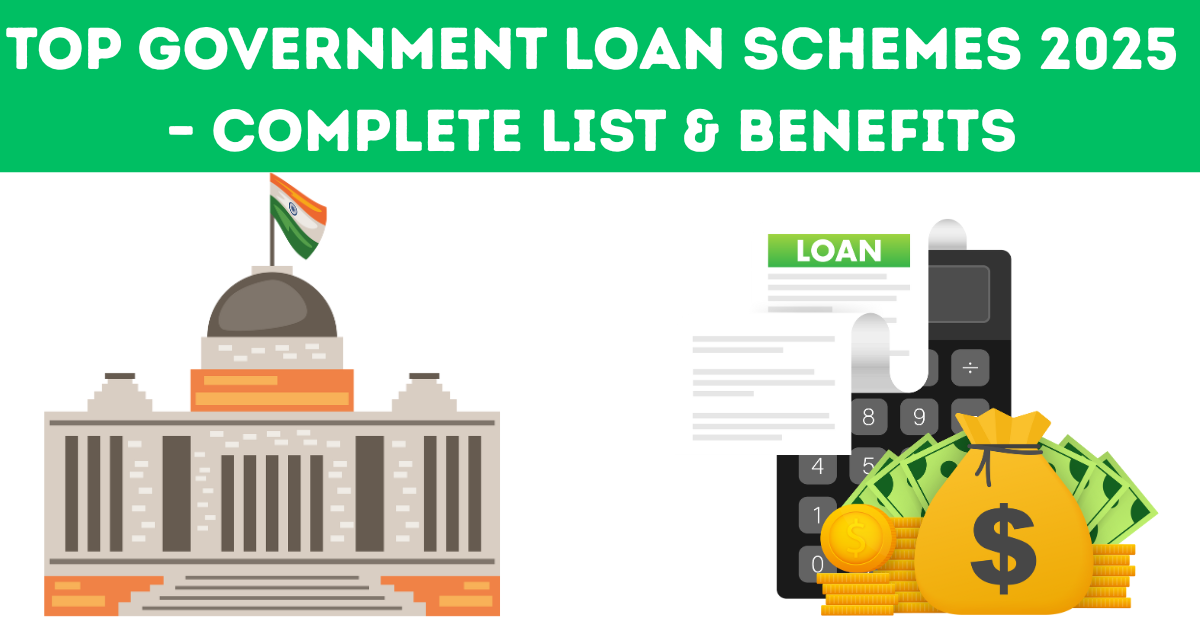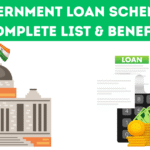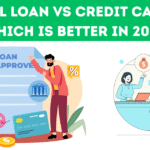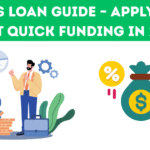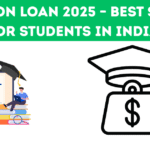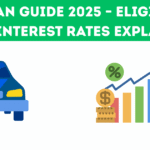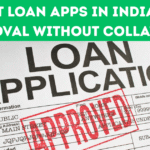In 2025, the Indian government continues to play a major role in ensuring that citizens have access to affordable credit. Private banks and financial institutions often charge high interest rates, and not everyone qualifies for their loans. To support different sections of society—farmers, students, small business owners, women entrepreneurs, and even street vendors—the government offers a wide range of loan schemes with attractive features.
Government loan schemes generally provide lower interest rates, easy eligibility, subsidies, and longer repayment periods compared to private sector loans. Whether you are planning to start a business, pursue higher education, buy your dream house, or expand your farming activities, there is a government-backed scheme designed to help you.
This article covers the top government loan schemes in 2025, their features, eligibility conditions, and the benefits they bring. If you are considering taking a loan this year, understanding these schemes will help you make the right choice.
Why Choose Government Loan Schemes in 2025?
Many borrowers still wonder why government loan schemes are more reliable than traditional private loans. Here are the main reasons:
- Affordable interest rates due to subsidies
- Access even for people with low income or no collateral
- Targeted support for women, farmers, SC/ST communities, and unemployed youth
- Flexible repayment tenures and moratorium options
- Safe and government-backed, reducing risk
- Empowerment through financial inclusion and economic stability
Pradhan Mantri Mudra Yojana (PMMY)
The Mudra Loan Scheme is one of the most popular programs supporting small businesses and entrepreneurs. It provides collateral-free loans to micro and small enterprises.
Key Features
- Loan range: ₹50,000 to ₹10 Lakhs
- Categories: Shishu (up to ₹50,000), Kishor (₹50,000–₹5 Lakhs), Tarun (₹5–10 Lakhs)
- No collateral required
- Tenure: Up to 7 years
- Interest rates: Starting around 8% per annum
Best For
Small shopkeepers, traders, artisans, manufacturers, and early-stage startups.
Stand-Up India Scheme
This scheme empowers women entrepreneurs and SC/ST communities by providing access to business loans.
Key Features
- Loan amount: ₹10 Lakhs to ₹1 Crore
- One SC/ST or woman borrower per bank branch eligible
- Tenure: Up to 7 years with flexible repayment
- Purpose: Manufacturing, service, and trading sectors
Best For
Women-owned businesses and SC/ST entrepreneurs.
Pradhan Mantri Awas Yojana (PMAY)
The flagship Housing for All scheme provides affordable housing loans with subsidies for lower and middle-income families.
Key Features
- Interest subsidy between 3% and 6.5%
- Maximum subsidy up to ₹2.67 Lakhs
- Loan tenure up to 20 years
- Beneficiaries include EWS, LIG, and MIG families
Best For
Families seeking affordable housing.
Pradhan Mantri Kisan Credit Card (KCC) Scheme
The Kisan Credit Card provides farmers with quick and affordable credit for cultivation and allied activities.
Key Features
- Loan limit: Up to ₹3 Lakhs
- Interest rate: 7% per annum with subsidy reducing it to 4% for timely repayment
- Coverage: Fertilizers, seeds, pesticides, equipment, livestock, and more
- Flexible repayment aligned with harvest cycles
Best For
Farmers, sharecroppers, and tenant farmers.
Pradhan Mantri Swanidhi Yojana
This scheme helps street vendors and small roadside shopkeepers grow their businesses with affordable loans.
Key Features
- Initial loan: ₹10,000 repayable in 1 year
- Higher loans available for successful repayment
- Cashback and digital transaction incentives
- No collateral required
Best For
Street vendors and hawkers.
National Small Industries Corporation (NSIC) Subsidy Schemes
NSIC supports micro and small businesses through financial assistance, subsidies, and technology upgrades.
Key Features
- Raw material assistance on credit
- Machinery purchase and technology support
- Marketing and export help
- Subsidies for trade fair participation
Best For
MSMEs and small manufacturers.
Pradhan Mantri Rozgar Yojana (PMRY)
The PMRY scheme supports unemployed youth who want to become entrepreneurs.
Key Features
- Loan up to ₹10 Lakhs
- No collateral for loans up to ₹1 Lakh
- Subsidy provided for eligible candidates
- Focus on youth aged 18–35 (with relaxation for women and special categories)
Best For
Young graduates and unemployed youth.
Credit Guarantee Fund Scheme for Micro and Small Enterprises (CGTMSE)
CGTMSE provides collateral-free loans to small businesses with government guarantees.
Key Features
- Loan amount up to ₹2 Crore
- Coverage for both term loans and working capital
- Collateral-free support through banks and NBFCs
Best For
Startups and MSMEs without security.
Eligibility for Government Loan Schemes
Though eligibility varies, most schemes require:
- Indian citizenship
- Minimum age of 18 years (sometimes 21+)
- Aadhaar card, PAN card, and proof of residence
- Income proof or business plan depending on scheme
- CIBIL score may not always be mandatory but helps in approval
Benefits of Choosing Government Loans
- Lower interest rates than private loans
- Access to credit for weaker sections and startups
- Special support for women, farmers, and youth
- Subsidies that reduce the repayment burden
- Schemes for housing, agriculture, education, and MSMEs
Quick Comparison of Loan Schemes
| Scheme | Who It Benefits Most |
|---|---|
| Mudra Yojana | Small businesses and shopkeepers |
| Stand-Up India | Women and SC/ST entrepreneurs |
| PMAY | Families seeking affordable housing |
| Kisan Credit Card | Farmers and agricultural workers |
| PM Swanidhi | Street vendors and hawkers |
| NSIC Subsidy | MSMEs and small industries |
| PMRY | Unemployed youth and graduates |
| CGTMSE | Startups and MSMEs without collateral |
Interest Rate Snapshot
| Scheme | Interest Rate Range |
|---|---|
| Mudra Yojana | 8% – 12% per annum |
| Stand-Up India | 8.5% – 10.5% per annum |
| PMAY | Subsidy up to 6.5% |
| Kisan Credit Card | 7% (effective 4% with subsidy) |
| Swanidhi Loan | 7% – 12% per annum |
| NSIC Subsidy | Depends on bank tie-ups |
| CGTMSE | Based on lending institution |
Tips to Apply for Government Loan Schemes
- Research which scheme matches your needs before applying
- Gather documents like Aadhaar, PAN, income proof, and business plan
- Maintain a good repayment record for smoother approval
- Apply through official portals such as PMMY, PMAY, and Stand-Up India websites
- Approach authorized banks, cooperative banks, and NBFCs for applications
Internal Linking Suggestions
👉 You may also like:
- Business Loan Guide – Apply Online & Get Quick Funding in 2025
- Education Loan 2025 – Best Schemes for Students in India
- Car Loan Guide 2025 – Eligibility, EMI & Interest Rates Explained
- Tips to Improve Your Credit Score for Easy Loan Approval
FAQs on Government Loan Schemes 2025
Q1. Are government loans interest-free?
No, but they offer lower rates and subsidies that make repayment easier.
Q2. Can women apply for any scheme?
Yes, but schemes like Stand-Up India and Mudra Yojana provide additional benefits.
Q3. Do I need collateral for government loans?
Most schemes like Mudra, Swanidhi, and CGTMSE are collateral-free.
Q4. Are students eligible for these loans?
Yes, students can apply for education loans under government banks and dedicated schemes.
Q5. How do I apply for Mudra Loan in 2025?
You can apply through nationalized banks, private banks, NBFCs, or the official Mudra portal.
Final Words
Government loan schemes in India are designed to empower citizens by making credit affordable and accessible. In 2025, these schemes are helping millions of people start businesses, pursue education, buy homes, or expand farming activities. Programs like Mudra Yojana, Stand-Up India, PMAY, Kisan Credit Card, and Swanidhi are strong examples of financial inclusion.
By selecting the right scheme, you can enjoy lower interest rates, easy eligibility, and better repayment options without the burden of high-cost private loans. If you are planning to apply for credit this year, government-backed loan schemes should be your first choice. They are safe, reliable, and an effective way to secure your financial future.
